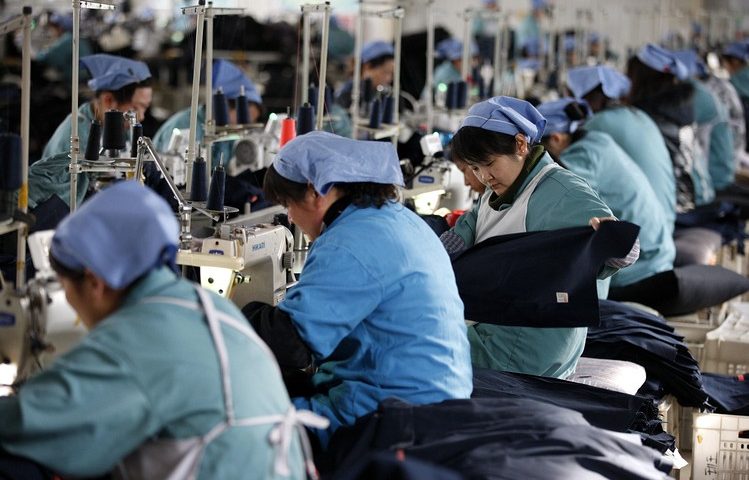BEIJING — China finished 2020 with a 10th consecutive month of expansion in its manufacturing sector, capping a dramatic year that saw the country’s factories incapacitated by the pandemic, only to roar back as a growth engine for China and the world.
Beijing’s official gauge of factory activity finished the year at 51.9, in line with expectations and remaining above the 50 mark that separates expansion from contraction, extending a streak that dates back to March. The reading was slightly lower than November’s 52.1 reading.
The Chinese economy also showed strength outside its factories. China’s nonmanufacturing PMI, which covers services like retail, aviation and software as well as the real estate and construction sectors, came in at 55.7 in December, the National Bureau of Statistics said Thursday. Though that reading was down from 56.4 in November, it marked a 10th month of expansion and remains near the highest levels in more than a decade.
Taken together, the robust finish to the year is likely to affirm economists’ forecasts for gross domestic product growth in the fourth quarter and full year of more than 6% and 2%, respectively. It also suggests a strong start to 2021, with economists both inside and outside the government projecting economic growth of 8% or more in the coming year.
Earlier this month, Goldman Sachs economists raised their GDP growth forecast for the fourth quarter to 6.8% from a previous estimate of 5.2%, citing expectations for “stronger momentum heading into the new year.” For the full year, Goldman raised its GDP estimate to 2.4% for 2020 from 2.0% previously, and to 8.0% for 2021, up from an earlier forecast of 7.5%.
Also likely to improve the overall statistical picture was a downward revision by China’s statistics bureau on Wednesday, which cut the country’s official GDP figure for 2019 to 6.0% from a previous reading of 6.1%. The lower base could provide a small boost to China’s GDP number for 2020. The statistics bureau is set to publish full-year figures on January 18.
Thursday’s PMI data showed some reasons for concern below the surface. The manufacturing subindexes measuring production, total new orders and new export orders all fell in December.
Even so, the subindex for new export orders stood above 50 for a fourth straight month, suggesting continued overseas demand for Chinese-made goods. A subindex measuring Chinese exporters’ business outlook rose for an eighth consecutive month in December to its highest level this year, reflecting manufacturers’ increased confidence in the global recovery, said Zhao Qinghe, an economist with the statistics bureau.
Even with the slight December retreat in the headline manufacturing number, Mr. Zhao said the pace of the manufacturing recovery picked up for the fourth quarter as a whole.
China’s manufacturing PMI didn’t fall by as much as it might have in December, given that several Western countries launched another round of large-scale coronavirus lockdowns in mid-December, said Iris Pang, an economist with ING Bank in Hong Kong.
Ms. Pang credited China’s continued strength to the fact that other exporting nations in Asia were also hit by a resurgence in the pandemic.
“Many orders flowed back to China,” she said. “China, once again, has played a complementary role in exporting.”
On the nonmanufacturing side, subindexes measuring business activity in the service sector and new orders for the entire nonmanufacturing sector both fell, though another measuring construction activity rose to 60.7 from the 60.5 in the previous month.

